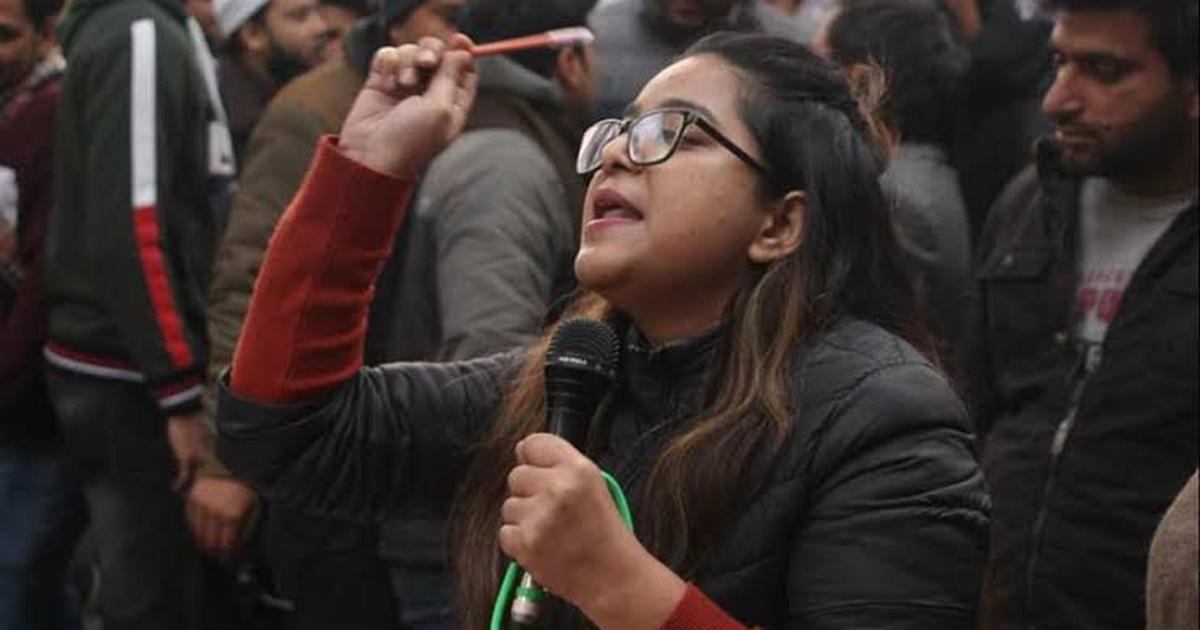“When you choose to play with embers, you cannot blame the wind to have carried the spark a bit too far and spread the fire [sic].” With these evocative words, Dharmender Rana, an additional sessions judge in Delhi, denied bail to Safoora Zargar, a 27-year old, 21-week pregnant MPhil student. Zargar’s crime — her playing with embers — was to give a speech against the Citizenship (Amendment) Act in northeast Delhi and be part of a WhatsApp group with like-minded protesters. The fire that was eventually lit — according to Judge Rana — were the riots in roughly the same area, allegedly part of a conspiracy to bring India to its knees during a visit by President Donald Trump. But what about the wind, which carried the embers?
This is where the evocative analogy collapses. Nothing in Judge Rana’s judgment or in the evidence placed before the court can link any riotous act to Zargar’s speech. At worst, by the judge’s own finding, she discussed the causing of a ‘chakka jaam’ (blockade) on a WhatsApp group. Although some slingshots, crates and glass bottles were recovered nearby, at first glance, these were unrelated to her speech.
If more evidence was available to demonstrate which way the wind blew, that evidence remains unseen. Without any such evidence, her playing with the embers was simplistically linked to the lighting of a fire with which it had no ostensible connection. Reason, like the missing evidence, was gone with the wind.
This lack of reason is the judgment’s conspicuous failing. No facts are disclosed on what Zargar actually said or did. At the same time, details of the actual acts that were committed, ostensibly pursuant to her statement, remain vague and undefined. A judge in a bail hearing, while not expected to adjudicate on the guilt of the accused, must be convinced that there is basis to charge the accused with the claimed offences. In this case, the police named sections ranging from mischief under the Indian Penal Code to conspiracy to cause both an unlawful and a terrorist act under the Unlawful Activities (Prevention) Act. The gravest charge, and the only one the judge discusses, is that she committed an ‘unlawful act’ intended to cause disaffection against India.
Here, there is a quick conclusion drawn, without demonstrating the contents of what she actually said, that her words had the tendency to create disorder. Such disorder was to be effectuated through the blockading of a road. But does the judge think that the nation is so insecure that a mere blockading of a road by a handful of protesters, assuming Zargar’s words had this effect, is tantamount to causing disaffection against India? If he does, he hasn’t shown why. If he doesn’t, he should have released her on bail while leaving her guilt to be determined in the normal course.
There is an unfortunate error in law. The UAPA is stricter on bail being granted when the offence involved is a terrorist act. Although a terrorist act was one of the offences being investigated, the entire judgment does not, even briefly, deal with whether such a case was made out. Instead it restricts itself only to unlawful activities, which are not terrorist acts. If it is indeed a case relating to unlawful activities, such as causing disaffection against India, the law is clear — the judge should apply well-established legal principles of bail.
Amongst these principles, one stands out. This is a golden rule of sorts, laid down by Justice Krishna Iyer — bail, not jail. Ordinarily, bail will be the rule unless the accused is a flight risk or a habitual offender. Only in such cases would continuous incarceration, as an exception, ordinarily be ordered. If Judge Rana had enquired into these facts, as he was required by law to do, he would have found no reason why the exception should prevail.
Instead, what he would have found is a 27-year old MPhil student who was completing her research in urban studies. He would have found a first-class distinction holder in her undergraduate degree in sociology from Jesus and Mary College, Delhi University. He would have found a first-class post-graduate M.A. degree holder from Jamia Millia Islamia University. He would also have found a 21-week pregnant woman with several medical ailments. He would have had to consider the effects of the Covid-19 pandemic in jail, especially on the unborn child guilty of no offence except for being in the womb of an incarcerated woman.
Irrespective of the result he reached, the judge owed Zargar an explanation after considering all relevant facts. Not doing so has deeper systemic implications. It incentivizes the callous and blanket quoting of heinous criminal offences, including terrorist acts by police officers, without demonstrable evidence. More worryingly, and unwittingly, it bolsters the public impression that for Muslims, Justice Krishna Iyer’s rule applies in inverted form — jail is the rule, bail the exception.
Needless to say, there may be enough factual evidence, in this case and others, to argue against such a proposition. But that is beside the point. If there were good reasons to keep Zargar in jail, then these reasons must be brought to the notice of the court so that in our adversarial criminal justice system, the defence counsel can attempt to rebut it. If this is not done, we might as well close our courts and hold hearings in secret.
Without clear evidence on facts, we must engage with what Judge Rana gives us. That, in short, comes down to his analogy of embers, the wind and fires being lit. Given that he finds Zargar playing with the embers, the judge assumes that there was a fire that had already been lit. That fire was the CAA and the National Register of Citizens exercise, both cleared by the Indian Parliament. If, by Judge Rana’s logic, the wind can’t be blamed, and playing with the embers is a crime, by the same token, the passage of the CAA by Parliament was the original sin. If that act on its own cannot be penalized in a criminal court, neither can Zargar’s act of speaking against it. A distinct analogy might have been more appropriate — Zargar was not playing with the embers. She was trying to put out the fire.
The author is Research Director,Vidhi Centre for Legal Policy. Views are personal










